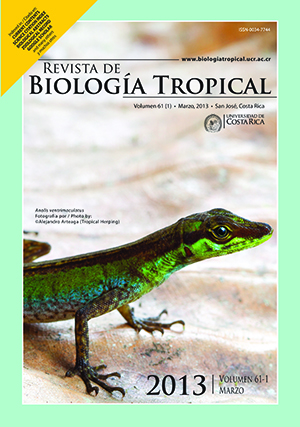Abstract
“Los Petenes” Biosphere Reserve (RBLP) is a critical habitat for many aquatic and terrestrial species. It has the biggest and better conserved seagrass beds, and it represents an important habitat for food, protection and breeding of aquatic organisms, and a temporal refuge for migratory species. The objective of this study was to describe the ichthyofauna diversity in the littoral coastal area of the RBLP, to identify the ecological dominant species, and to analyze the abundance of the fish community and its temporal and spatial changes, and their relationship with some environmental variables. Monthly fish samples were obtained with the aid of trawl nets, from 24 samplings sites distributed along the reserve, between May 2009 and April 2010. The trawl net was operated 288 times and 21 795 individuals with 279.5kg of weight were collected. A total of 46 fish species grouped in 34 genera and 23 families were identified. In a spatial scale, the abundance showed the next ranges: 0.018-0.094ind./m2; 0.249-1.072 g/m2 and 9.75-19.32g/ind.; the diversity indexes obtained were: H’n=1.46-2.15, J’=0.45-0.71 and D’=2.08-3.92. In a temporal scale, the abundance and diversity ranged between: 0.026-0.066ind./m2; 0.342-0.764g/m2 and 6.49-22.98g/ind.; H’n=1.76-2.08; J’=0.52-0.64 and D’=3.07-4.18. Eleven dominant species were identified with a representation of the 94.39% in number of individuals, and 89.66% in weight of the total catch. From the total, eight species had economic or commercial importance, especially Lagodon rhomboides and Haemulon plumierii. The cluster analyses identified four fish associations; these results are discussed in order to identify relationships between habitat-species. Finally, the canonical correspondence analysis evidenced an association between H. plumierii with salinity and dissolved solids. The RBLP has high habitat diversity and its fish community has developed strategies to use all the spatial and temporal conditions and to satisfy the needs of their life cycles.##plugins.facebook.comentarios##
Downloads
Download data is not yet available.






